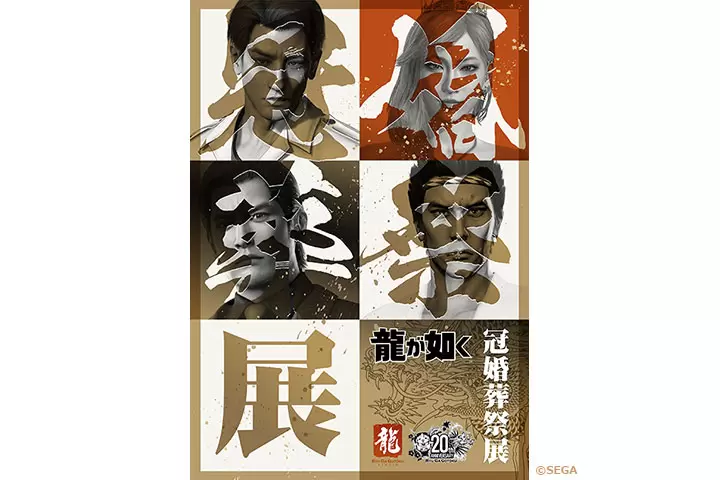“Yakult”: The Story of Japan’s Famous Probiotic Lactic Acid Bacteria Drink

“Yakult” is a probiotic, lactic acid bacteria drink packaged in small plastic bottles that was first created in Japan nearly 90 years ago. In this article, we dive into the origin of its name, the reason behind its bottle shape, and other intriguing secrets about this long-time seller.
The Birth Story of “Yakult”

Yakult’s founder Minoru Shirota
“Yakult” contains a lactic acid bacteria called Lactobacillus casei strain Shirota (hereafter “Shirota strain”). A distinctive feature of the Shirota strain is that it has been reinforced to be more resilient in acidic environments so that it can reach the intestines alive without being killed by gastric juices, bile, and other digestive fluids. Moreover, it increases the number of beneficial bacteria in the intestines and improves gut health while reducing bad bacteria.
The Shirota strain was discovered by Yakult’s founder Minoru Shirota.
During Shirota’s childhood, Japan’s environment was marked by unsanitary conditions and the prevalence of infectious diseases that took the lives of many children. Pained by those circumstances, Shirota began to work on microbial research.
Shirota identified during his research on microbes that live lactic acid bacteria had a beneficial effect on the intestines. However, ordinary lactic acid bacteria would be killed by gastric juices, bile, and other digestive fluids.
Shirota then worked on reinforcing lactic acid bacteria cultures so that they safely make it to the intestines alive. After much hardship, he finally succeeded in 1930. This very lactic acid bacteria was the Shirota strain.
*From April 2020, classified as Lacticaseibacillus paracasei strain Shirota.

Yakult’s History and the Origin of its Name

The Shirota Research Institute (Fukuoka), where Yakult production and sales began
After he succeeded in creating a reinforced Shirota strain culture, Shirota began to produce and sell the fermented dairy drink Yakult in 1935 at the Shirota Research Institute in Fukuoka together with his colleagues. They wanted to make sure that more people could receive the benefits of the Shirota strain.
At the time, Yakult was packaged in glass bottles and was a product that buyers needed to dilute before they drank it.
The Association for Promotion of Preventive Bacteria Strain Shirota, Yakult’s marketing organization, was established across Japan in 1940. It resulted in Yakult becoming widely available.
The name “Yakult” comes from the word “Jahurto” which means yogurt in Esperanto. Esperanto was designed to be a universal language. The product was therefore named as such to express the desire to “contribute to the universal desire of being healthy.” It is now a coined term that is easy to pronounce even in Japanese.
The Secret Behind the “Yakult” Bottle

The Yakult glass bottle from the 1950s (left) and Yakult when it made the switch to plastic bottles (right)
Yakult is now a drink beloved by all generations in many countries and regions around the world. But the bottle being an effective shape was also a big factor in that success.
Its shape makes it easy even for a small child to hold it in their hands, and it has a size that fits perfectly on an adult’s palm. That bottle design was first invented in 1968.
Until then, Yakult was sold in heavy glass bottles. However, as the number of bottles and deliveries increased, so did the heavy burden of the weight on the salespeople who would carry around the Yakult. What’s more, the glass bottles needed to be collected afterward.
Therefore, it was decided that a new plastic bottle that would be lightweight and did not require collection would be developed.
Mr. Isamu Kenmochi, a famous designer during that period, was entrusted with the design. Kenmochi pondered the new bottle design based on various desired parameters before arriving at its uniquely curved shape.
It would not only be easy to hold by having a curved shape, but it also prevented its contents from flowing out into your mouth all at once. This made it possible to slowly savor Yakult’s taste.

The Yakult bottle was registered as a three-dimensional trademark in 2011
It became easier to carry Yakult with the switch to the plastic bottle. The shape of the bottle itself also became deeply ingrained in the hearts of the people throughout Japan.
The bottle was registered in Japan as a three-dimensional trademark in 2011. This was because many people immediately associate the shape of the bottle with Yakult.
Popular Products and Where to Find Them

Japan sells various Yakult products, all of which are popular. Below we introduce a few of the products in the Yakult series that can be purchased in Japan.
New Yakult: Contains 20 billion units of the Shirota strain per bottle (65 ml).

Pictured from left to right are the Yakult1000 and Y1000.
Yakult1000: Contains 100 billion units of the Shirota strain per bottle (100 ml). It contains one billion units of Shirota strain bacteria per 1 ml, which is a remarkably high density, and consuming it confers benefits such as stress relief and sleep quality improvement during situations of temporary mental stress. This product can only be purchased from door-to-door salespeople.
Y1000: Contains 110 billion units of the Shirota strain per bottle (110 ml). It contains the same high density of Shirota strain as Yakult1000 and confers the same benefits, including stress relief and sleep quality improvement during situations of temporary mental stress. It can be purchased at supermarkets and convenience stores.
Learn more about ”Yakult” on the official website
All About the Yakult Ladies

A Yakult Lady (right) delivering products to a customer

Products such as New Yakult and Y1000 can be purchased at convenience stores and supermarkets.
Other than going to physical stores, Yakult products can also be purchased from door-to-door salespeople called Yakult Ladies who visit typical households and workplaces to sell their products.

A Yakult Lady from the 1960s (Japan)
Ever since the company’s early years, it dispatched door-to-door salespeople to customers’ households to sell Yakult and inform them directly about Yakult’s features and value.
At the time, most customers were housewives. This fact inspired the company to introduce a female salesforce in 1963 based on the idea that “female customers would likely find it easier to chat with a door-to-door salesperson who is also female.” This workforce became the present-day Yakult Lady system.
The Yakult Lady system also expanded alongside the expanding popularity of Yakult in other countries and regions. Currently, you’ll find Yakult Ladies working in various Asian countries, as well as in Brazil and Mexico.
You can purchase products directly from a Yakult Lady if you ever run into one in Japan! (Payment is typically cash only)

Courtesy Visit Activities
In fact, Yakult Ladies do more than simply deliver products to customers. They also watch over their community by providing health information and products.
In Japan, which has a progressively aging population, Yakult Ladies conduct a program called Courtesy Visit Activities in which they check on the welfare of elderly people who are living alone and engage them as a conversation partner while delivering products. This program provides encouragement for elderly people who often do not have opportunities to converse with others and provides them with emotional support.
Yakult’s Official Mascot Character Yakult Man

Yakult Man
Yakult has an official mascot character named Yakult Man. He is a hero that you can depend on to protect the peace in your tummy.

Yakult Man also has companions in Yakult Man Blue, the Bacteria Brothers, and Dr. Kunitachi. They share fascinating information about Yakult through fun videos and comics. Please give them your support!
Indispensable to Everyday Life

Yakult’s iconic small bottle has become deeply rooted in the daily lives of Japanese people and has helped many people with their health for decades. Yakult is currently sold in 40 countries and regions worldwide, so if you still haven’t tried it, check whether “Yakult” is available in your country by clicking here.
The next time you’re in Japan, try to find a Yakult product at any supermarket or convenience store that’s slightly different from what’s available in your country.
Visit the official website of Yakult
All pictures courtesy of Yakult Honsha Co.,Ltd.
Sponsored by Yakult Honsha Co.,Ltd.
Written by Callie
MATCHA's promotional account for corporate and local government advertising. We aim to provide useful information to our readers in an enjoyable manner.





























![[Coupon Available] Recommended Fall/Winter Wear from Scandinavian Brand "Helly Hansen"](https://resources.matcha-jp.com/resize/720x2000/2025/12/15-252920.webp)
![Deep dive into Japanese brands! A tour of famous leather shoe stores with GENSEI & Nin [Otsuka Shoes Edition]](https://resources.matcha-jp.com/resize/720x2000/2025/12/15-252972.webp)